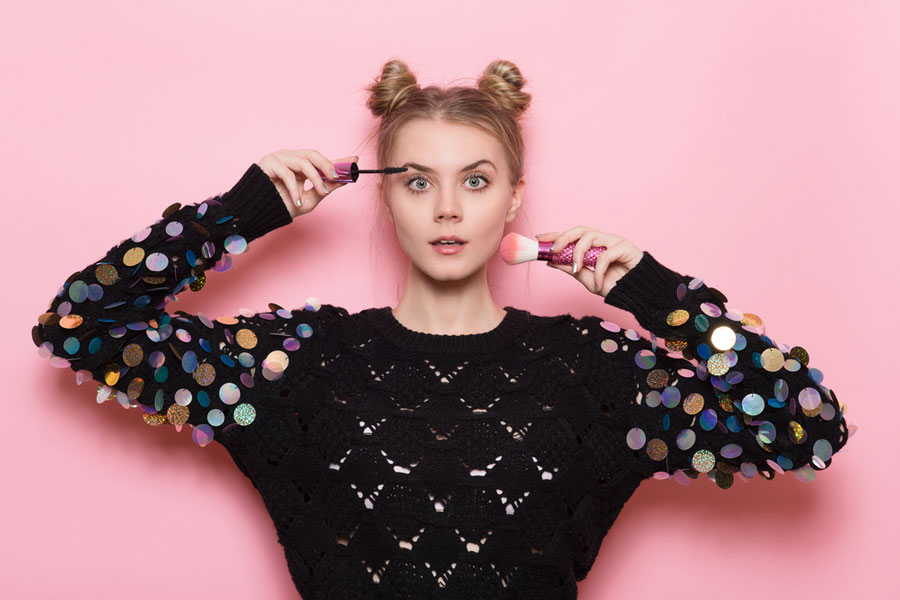
07 Jun Where did the obsession with the perfect body image begin and how much damage has it caused?
Since the Back on Track Teens body image mini-series began, many teenagers and young people have shared challenges and concerns around this very matter. You have divulged negative feelings around your body and expressed concerns about the damaging effects of the perfect body image portrayed on social media.
“Since I don’t look like every other girl, it takes a while to be okay with that. To be different. But different is good.”
Serena Williams
Where did the obsession begin? A quick history lesson
In this blog, we will explore how and where this obsession with the perfect body image began. We’ll look at how the media, especially social media, has escalated the challenges and role of gender.
Imagine travelling back to ancient times and watching generations and cultures evolve. You will notice that there have always been differing ideals for body image in society.
Ancient Egyptians painted their ideal image in tombs, temples and throughout their architecture. You will see an emphasis on the female physique (more so than the male), showing the perfect woman as slim with narrow shoulders and a long waist.
The ancient Chinese illustrated petite female figures with narrow waists and pale skin in their art.
The ancient Greeks held an opposite ideal for their ladies, portraying them as fuller-figured, plump and fair-skinned. They highlighted men as strong masculine figures in art and sculptures with Adonis-like chiselled bodies.
Looking back at historical relics, do they show that beauty is in the eye of the culture rather than the beholder?
In Italy, the 16th century typical wife reflected the status of her husband in her figure. If he was wealthy, she would represent that by having full hips and an ample bosom.
It was similar in England, during the Victorian era when it was fashionable or desirable for females to have a fuller figure. Paintings, drawings and sculptures – and later in photographs – all show the same images.
The one saving benefit would have been that if you didn’t live in upper-class circles, or as one of the elite, your exposure to images of the perfect physique would have been non-existent. As a consequence, you wouldn’t have known any different and wouldn’t have felt the pressure. You would have been free to feel comfortable in your skin.
Where did it start to go wrong for the masses?
What happened to make society want to be super skinny?
One word: corset.
In the 1820s, even though corsets had been around for many years, they became the popular fashion for men and women to pull you into shape – literally.
For men, that shape was to appear slimmer, even nipped in at the waist at one point. For the ladies, the corset was the beginning of the desired curvy figure. Pinching and squeezing at the waist to make it smaller also emphasised the hips and the bust. The classic hourglass figure was the outcome, and the beginning of when looking good became more important than feeling good – fashion over comfort.
“I definitely have body issues, but everybody does. When you come to the realisation that everybody does — even the people that I consider flawless — then you can start to live with the way you are.”
Taylor Swift
The role of the glamour girl and glossy media
The so-called ‘Gibson Girl’ was celebrated in the United States in the late 1800s to represent refined beauty and a calm, confident, independent woman. The work of artist Charles Dana Gibson drew several images that focused on the best bits to portray ‘the ideal physical attractiveness of a woman.’ Tall, slim, curvy, and, guess what? She wore a corset!
Fashion and media industries began to grow once the first magazines, including Harper’s Bazar and Life Magazine, appeared on general sale in the 1920s in the United States. Gibson Girl images started to appear in magazines, posters and early motion pictures. And with it, the pressure of women needing to look a certain way.
The golden age of Hollywood rose in the 1930s to 1940s as people escaped from the great depression and world wars into a fantasy world of beautiful, sexy, feminine and masculine celebrities.
Pinup girls and sex symbols with hourglass figures arrived in the 1950s. Playboy Magazine, Playboy bunnies and the Barbie doll launched. Barbie remains popular today and still emphasises the unrealistic corset type figure.
Stick-thin supermodels and actresses were everywhere, topped up with celebrity workouts, weight-loss diets and fad foods.

Figure and face enhancing cosmetics
Next came the explosion of the cosmetics industry with paints, powders and pencils, followed closely by cosmetic surgery. Big boobs, tiny waists, big bottoms, facelifts, tummy tucks for the gals, and bicep and pec implants for the guys. Who needs to work out when you can go under the knife, have fillers and fake bits in a matter of days?!
Having to live up to perfect images is no longer a female issue. Photos of buffed up athletes, boxers, bodybuilders and chiselled actors and singers have ramped up the pressure for the boys too.
Gyms are busier than ever, and so are the sales of anabolic steroids to get bigger, faster!
Technology has increased consumption of the perfect body image
Technology has advanced. The Internet and mobile phones have catapulted the ease of accessing content online and through apps. Perfect people are everywhere now that filters and photoshopping are the norm. Before the invention of selfies and social media, the only unrealistic images you saw were those of touched-up models and celebrities in magazines. Now it’s easy to enhance your appearance online. Without having to spend a small fortune on professional photographs, you can smooth out your skin tone, remove dark circles, make your eyes look bigger, your nose smaller, your lips fuller and your teeth whiter! But it’s not real, is it?
How often do you find yourself scrolling and stopping to compare yourself to a perfectly staged photo? That act right there can be so damaging. Comparing is despairing, especially when you fall short of your electronically-altered self! It’s fake, and this fakeness is causing a genuine anxiety problem in young people – in everyone.
Advertising prays on insecurities of not being perfect
Perfect skin, volumised smiles and ripped bodies are praying on insecurities. Advertising promises that you’ll appear more masculine/feminine or popular if you buy that body spray, those shaving products, those face creams, hair products, hair replacements etc.
Did you know that eating disorders are increasing at a faster rate in males than in females?
It’s a worrying issue. Females are obsessed with being skinny, whereas boys are obsessed with being muscular. Anorexia in girls and bigorexia in boys! Yes, I did say bigorexia. Trying to get the ideal physique by working out excessively, increasing protein intake, cutting out carbs, adding supplements and even steroids to minimise body fat and maximise muscle gain is gaining popularity. But again, it’s not natural.
“You have to stand up and say, ‘There’s nothing wrong with me or my shape or who I am, you’re the one with the problem!”
Jennifer Lopez
Research for yourself
Don’t take my word for the fakery out there; do your research. Take a few minutes and hop online to search YouTube for so-called influencers. Google ‘what do the so-called influencers look like?’
I promise the results you’ll find will be tonnes of videos and I guarantee the influencers will look nothing like their Instagram poses. I think you’ll be shocked by how different they look. They’re just like you. Ordinary people with ordinary looks, and there is nothing wrong with that. You will soon realise that what you’re comparing yourself to isn’t real.
Please share what you find with me by commenting below, emailing me or sending a private message via one of our social media channels.
Choose the life you want to lead
You are beautiful as you are. Being beautiful and loving how you look is an inside job, not an outside job.
Will you help me to shout out about beautiful inside jobs? I’m on a mission to reverse the damage to self-esteem and confidence that these ‘perfect but fake’ images are having on young people, and I invite you to join me.
Next week we’ll talk more about this topic and share tips from the experts that will boost your body confidence.


No Comments